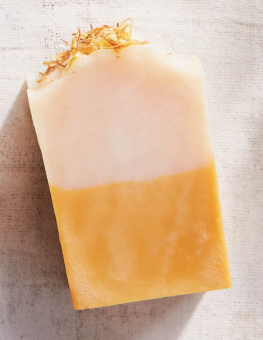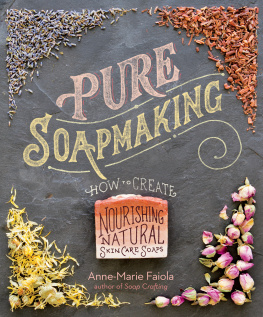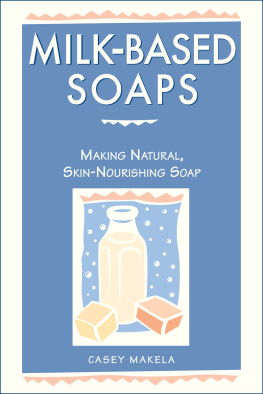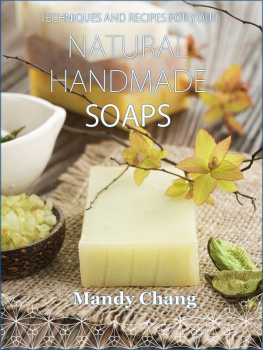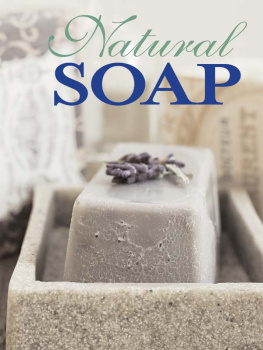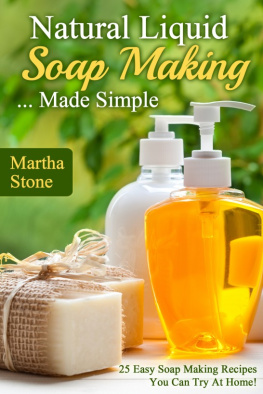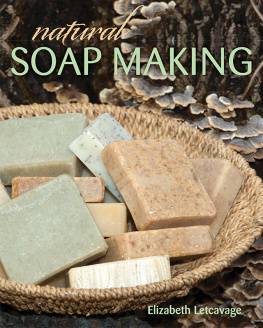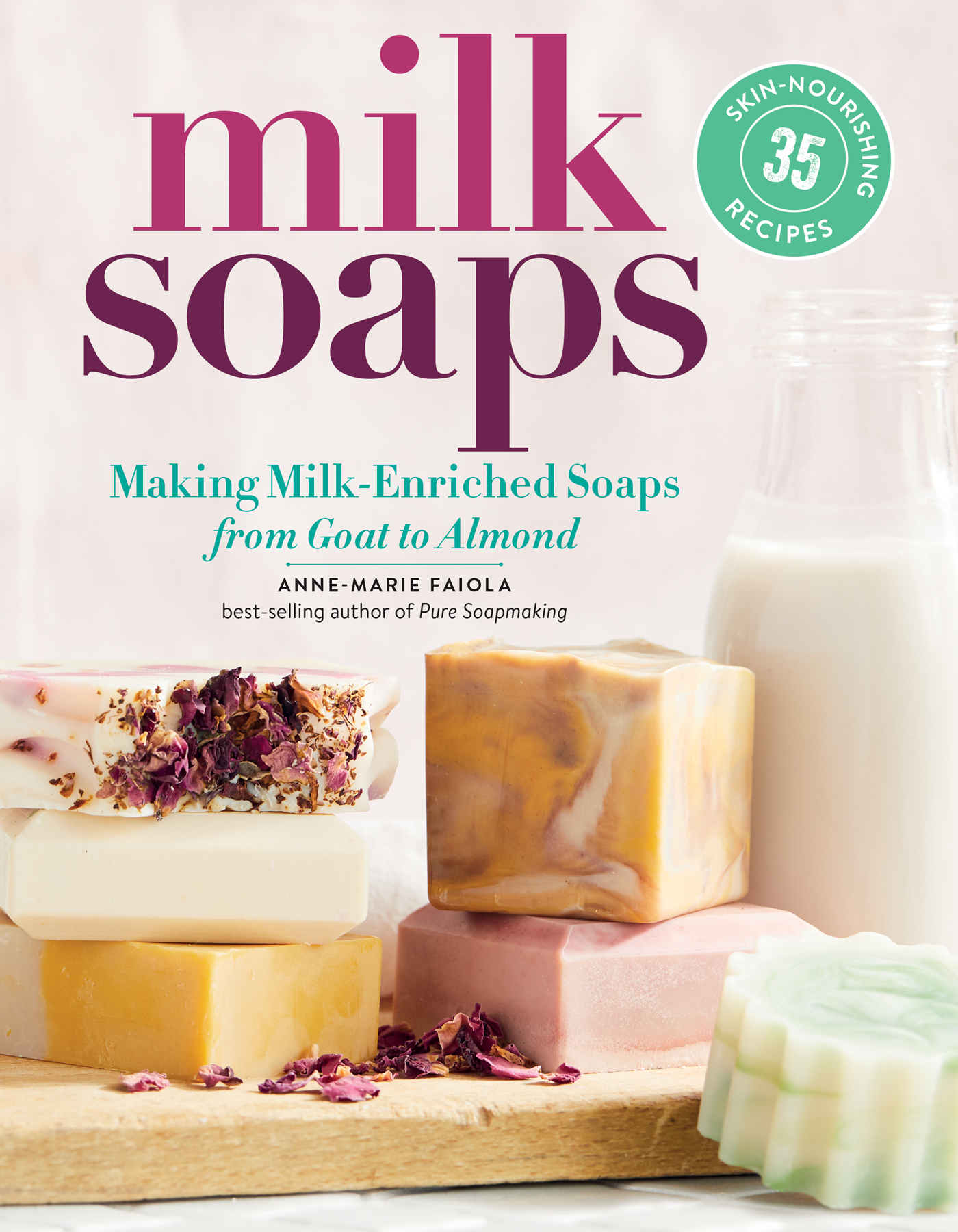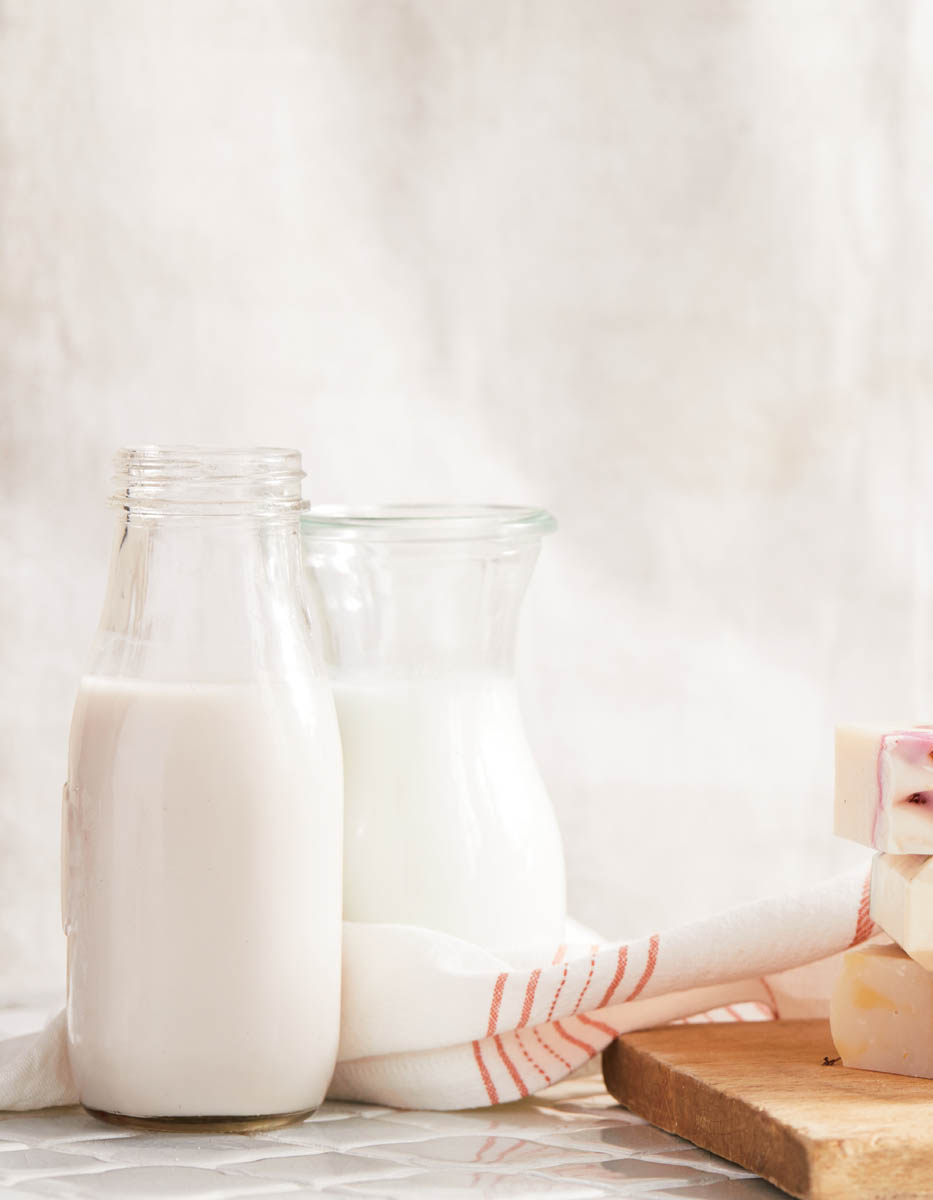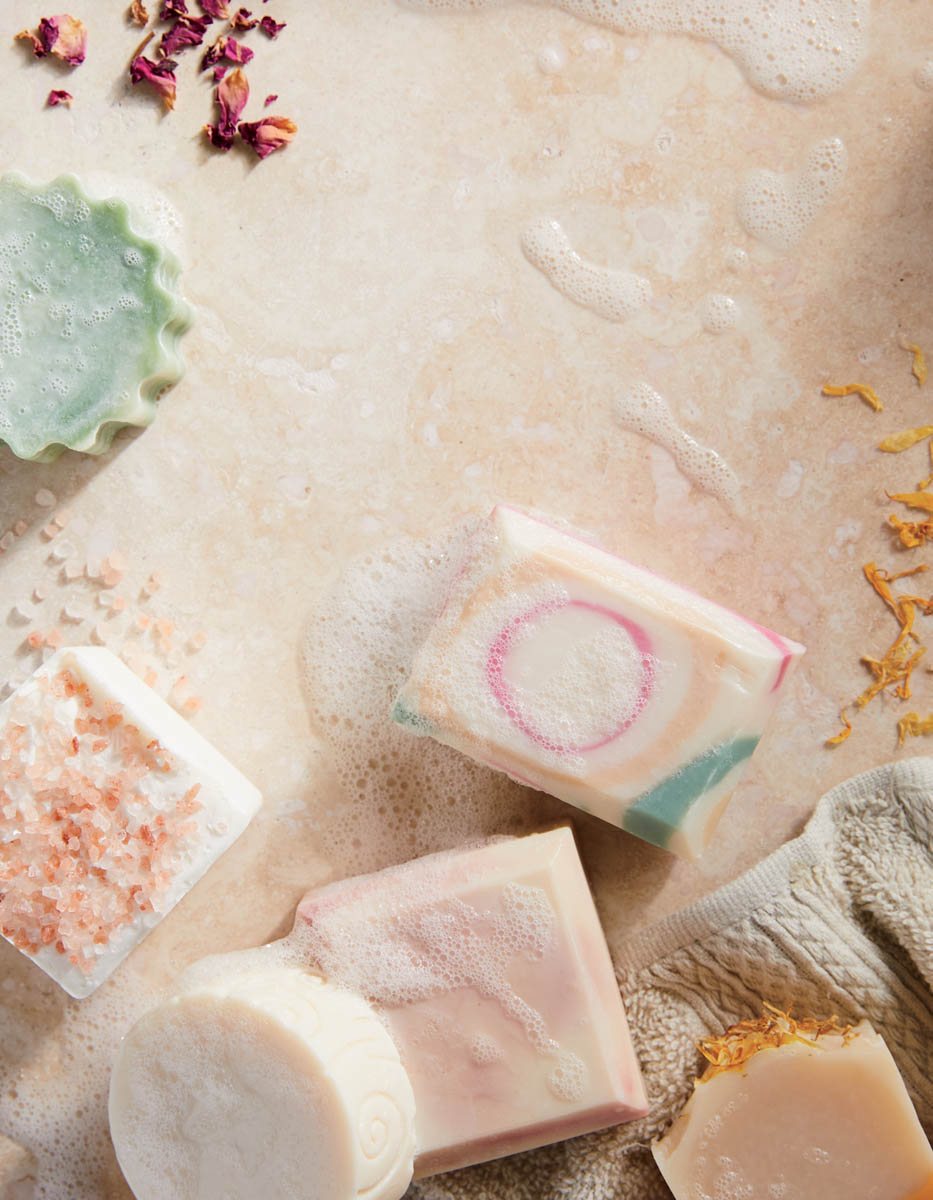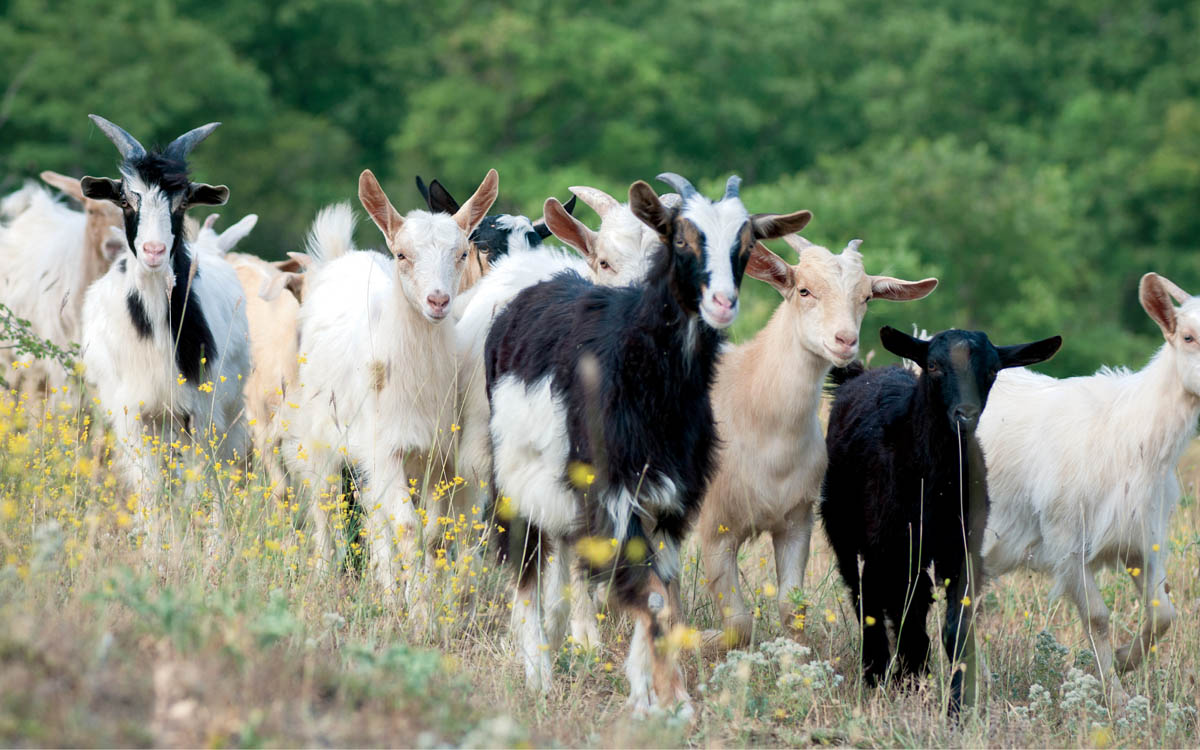Contents
Introduction
Handmade is bestmade is a tagline we frequently use at Bramble Berry. Its true for almost everything. Think of artisanal cheeses and breads yum, right? Handmade shrubs and bitters? Amazing. The same goes for handmade soap its just better. It feels better, looks and smells better, and performs better. You can choose the most skin-loving, gentle, and conditioning ingredients when youre crafting with purpose, and the end result shows it.
Handmade soap may not be the cheapest choice (its hard to compete with pressed sodium lauryl sulfate on price), but you wont have to slather on lotions or creams after using it because it doesnt strip your skin of natural oils. Synthetic lathering agents do provide lather and high cleansing ability, but those copious bubbles dissolve essential skin oils as they wipe clean the ravages of the day. Handmade soap simply feels better on the skin; it pampers as it cleans.
Another reason handmade is bestmade is because you control the colors and the fragrance. Want your soap to match your bathroom or smell like your grandmas garden? Are you planning a bridal shower and want to follow the color theme of the wedding? Done, done, and done! The process of soapmaking is one of transformation: transforming oils into something new, useful, and beautiful. Having a creative outlet is essential in all of our lives, and soapmaking provides a beautiful way to express yourself.
Ive been making soap by hand since I was a teenager. I remember rendering my own tallow, trying to decode chemistry textbooks, and wondering why I couldnt use Dra- no to make soap. My first five batches failed. I had to figure out how to dispose of caustic failed soap, but it was a thrill to give away my first successful batches, molded in Rubbermaid containers, chopped up with a knife, and wrapped in plastic wrap. At age 17, shaking like a leaf, I walked into a local store with a basket of my wares, hoping to sell my soap. I was rejected. The bars werent uniform enough. I returned a month later with a signature mold style and shape that would later become Bramble Berrys first custom mold. I landed the account. After that I was hooked.
The idea that I could create, control my ingredients, be an alchemical artist, and make money was magical. Through the lens of soapmaking, science felt supremely useful. At the time there were no soapmaking books, save one that utilized Crisco for most of its recipes. Thats one of the reasons I was inspired to write my first two books, Soap Crafting and Pure Soapmaking. I wanted to create the books I wished had been around when I started my journey into soapmaking.
With this book, Im taking that journey to the world of milk-enriched soapmaking. These recipes are designed to appeal to a wide variety of soapers fans of all-natural products, people who prefer palm-free soaps, casual and expert soapers alike. Each recipe that utilizes synthetic ingredients for design purposes offers all-natural alternatives that will bring you similar results. Each recipe has been created by an expert soapmaker and tested multiple times by brand-new soapers in order to account for every variable, so whether this is your first batch with cold-process soap or milk soap or your hundredth, youll get consistent results every time. Handmade is bestmade, and Im so happy youve chosen to take this journey with me.
Chapter One Why Make Soap with Milk?
Most soaps are made with water, but you can use any liquid that has a pH above 6: milk, tea, even beer and wine. So why an entire book dedicated to making soap with milk? Well, its kind of like drinking hot chocolate made with milk instead of hot chocolate made with water.
Milk soap is creamier and more luscious than soap made with water. The lather is more dense. The foam is more fine and silkier. Milk soaps have the same cleansing power, but milks natural oils and acids pump up the skin-loving moisture quotient and aid in skin renewal.
Animal-based milks contain a small amount of lactic acid, which acts as a gentle exfoliant. As it cleanses, it helps remove dead skin cells to reveal smoother skin. Animal-based milks also have naturally occurring amino acids and a host of skin-loving vitamins. When making soap, the more fat you have in the milk, the more those delightful lipids interact with the glycerin and nourishing oils in the recipe to create a treat for your skin. I like to soap with full-fat milk, but you can use any version in these recipes.
Plant-based milks work equally well (see ). While these recipes have been formulated with specific milks, you can substitute any milk for the one called for in any recipe.
Sour Milk?
Milk spoils on your counter. Why doesnt it spoil in soap? The high pH of the soap mixture ensures that the bacteria that spoils milk are fully neutralized in the soapmaking process. The richness the milk gives the soap is still present in the final bar.
Using Mammal Milks
Some popular milks to make soap with include the following.
Cows Milk
Cows milk is the most readily available animal milk, though milk from other animals is increasingly easy to locate, depending on where you live. The fat molecules in cows milk are larger than in other animal milks, which is why some lactose-intolerant individuals can drink goats milk instead. In soap, the size of fat molecules does not have much bearing on the final product.
Cows milk is slightly higher in sugar than goats milk, leading to larger, creamier bubbles in the final product. It is higher in vitamin B12 and vitamin D, as well as folate and selenium, than goats and sheeps milk. The vitamins and selenium are especially skin-loving antioxidants that help repair free-radical damage. Folate (also known as vitamin B9 ) is important for skin cell renewal and growth.
Goats Milk
Goats milk soap is one of the best-known types of handmade soap. It is popular because of its nourishing properties. Goats milk is full of nourishing vitamins helpful to skin, like A, B1, B6, B12, C, D, and E. It is also high in naturally occurring enzymes and proteins. Goats milk has a reputation for having natural antimicrobial properties and for being good for acne.
Youll also see claims that goats milk soap is best for difficult skin conditions such as psoriasis and eczema because goats milk soap contains caprylic acid. Caprylic acid is naturally found in goats milk, though its more commonly associated with coconut oil and liquid glycerin. It adds to the silkiness of goats milk soap, bumps up the antioxidants, and is a fantastic emollient and moisturizing agent.

